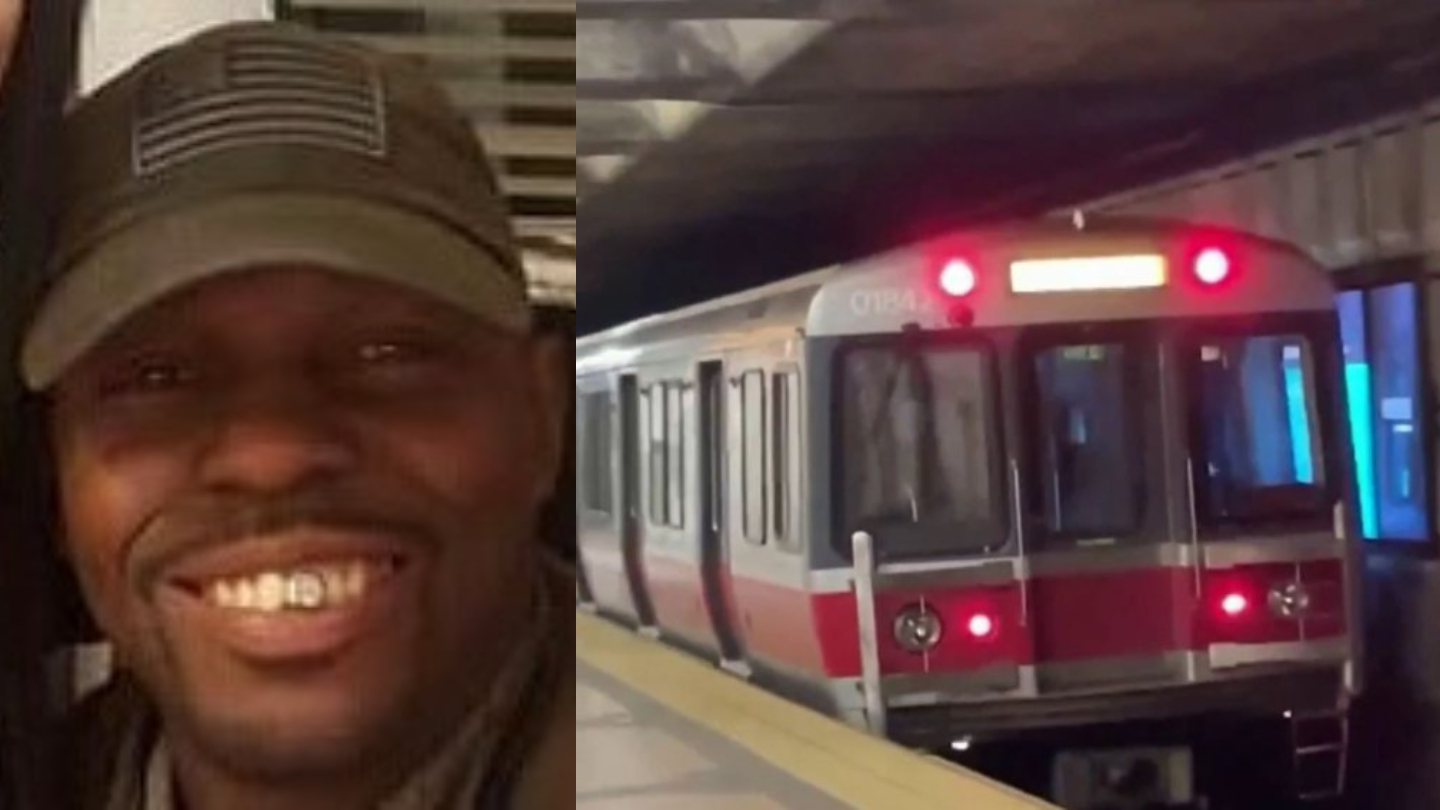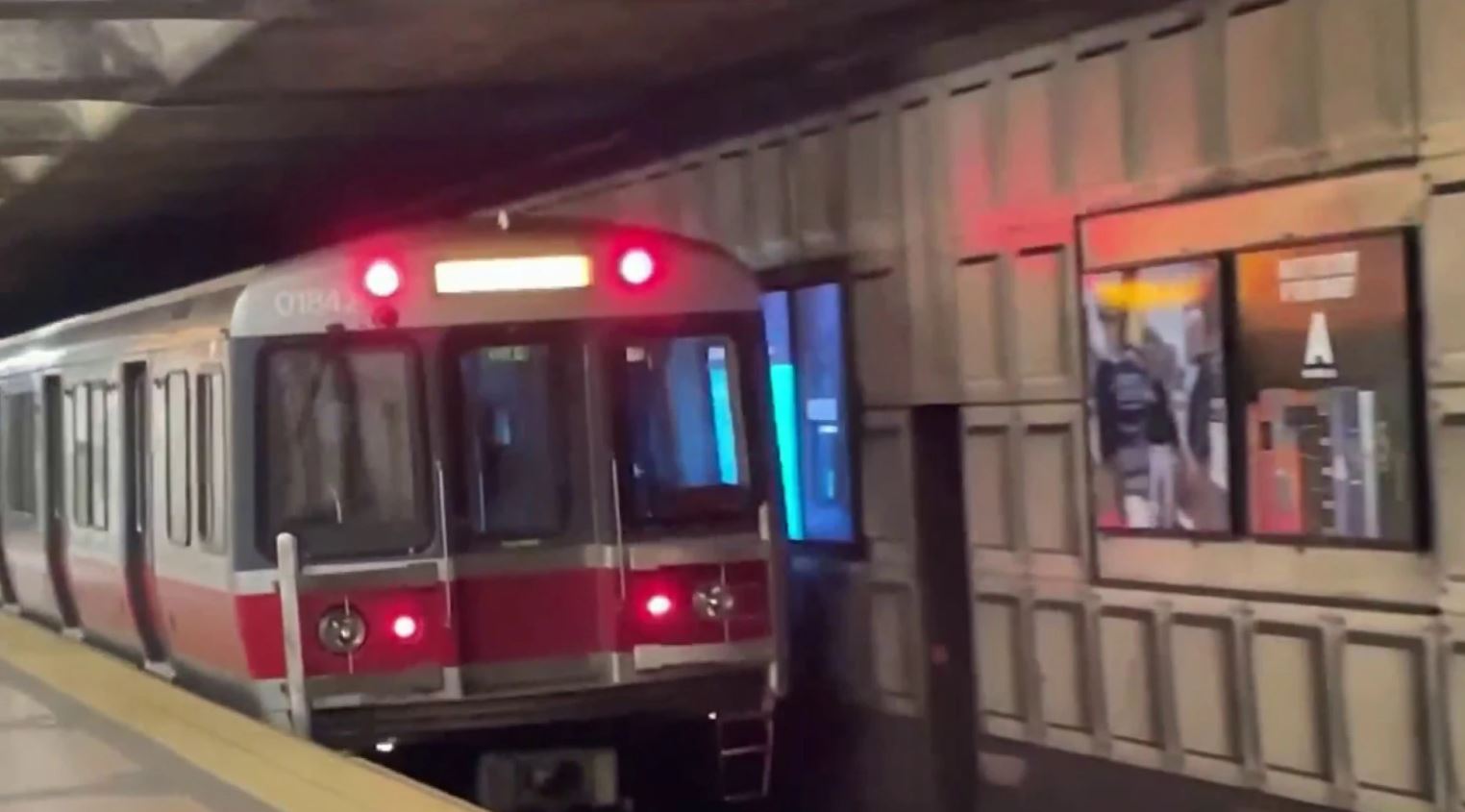A passenger door on a Boston subway car did not function properly when a man got his arm stuck in it and was dragged to his death last month, federal investigators said Monday.
The trains are equipped with safety features to prevent them from moving when the doors are obstructed, the National Transportation Safety Board wrote in the preliminary report.
“NTSB investigators examined and tested the railcar involved after the accident, identifying a fault in a local door control system that enabled the train to move with the door obstructed,” the report said.
The man, identified by local authorities as Robinson Lalin, 39, of Boston, died around 12:30 a.m. April 12 as he exited the six-car Massachusetts Bay Transportation Authority Red Line train at the Broadway Station.
Get New England news, weather forecasts and entertainment stories to your inbox. Sign up for NECN newsletters.
Lalin got his right arm stuck in the door and was dragged more than 100 feet along the platform, onto a lower surface near the tracks, the NTSB report said. He was pronounced dead at the scene.
Lalin's family said they are trying to be strong, but the loss is overwhelming.
"I just feel so sad,” Oscar Lalin, Robinson’s older brother, said Monday. “We were not expecting for it to happen the way it did and we are heartbroken for the single fact it happened the way it did."
“It made me sick to my stomach, it hit me hard in the gut honestly,” Kelvin Lalin, Robinson’s nephew, said Monday after reading the preliminary NTSB report. “My uncle did not deserve that at all, no one does and I hope that another family doesn't have to suffer.”
“I am just lost for words, I lost my brother, I love him so much. We are grieving, my family is honestly devasted, and we are honestly more devastated after reading the report, I can't imagine the full report,” he added.
“Honestly, I wanted to vomit, reading the story I could see it in my head, my uncle suffered, I can imagine him screaming, I can imagine him being scared so scared, panicking, the train continuing to go,” Lalin said.
Read the NTSB's preliminary report
On April 10, 2022, about 12:30 a.m. local time, a Massachusetts Bay Transportation Authority (MBTA) passenger was fatally injured at the Broadway Station in Boston, Massachusetts. Surveillance video reviewed by National Transportation Safety Board (NTSB) investigators showed that the passenger attempted to exit the six-car train through the side passenger door of the railcar they were riding in as the train doors were closing. In the attempt to exit the train, the passenger’s right arm was trapped in the door. The train departed the station, dragging the passenger along the platform about 105 feet and onto the surface below, near the tracks.
MBTA trains are designed and equipped with safety features to prevent them from moving when the passenger doors are obstructed. NTSB investigators examined and tested the railcar involved after the accident, identifying a fault in a local door control system that enabled the train to move with the door obstructed. (See figure.) The MBTA immediately initiated a fleet inspection looking for the identified fault in other railcars to prevent reoccurrence. The MBTA reported that no other similar faults were found during the inspection.
While on scene, NTSB investigators examined and tested the train equipment, reviewed security footage, observed MBTA train operations, conducted interviews, and performed sight distance observations. The NTSB’s investigation is ongoing. Future investigative activity will focus on the MBTA’s passenger train equipment and operating procedures.
Parties to this NTSB investigation include the MBTA, the Massachusetts Department of Public Utilities, the Federal Transit Administration, and the Boston Carmen’s Union.
MBTA issues statement
MBTA officials had previously declined to answer questions about what kind of sensors are in place when the doors close, whether the car may have malfunctioned or whether the operator may be at fault.
On Monday, the MBTA issued a statement acknowledging the release of the NTSB report and identifying the problem that led to Lalin's death as a "short circuit."
"The NTSB has confirmed the MBTA's initial assessment of a short circuit in the car's wiring that allowed the train to begin moving while Mr. Lalin was attempting to exit through the closing doors," the MBTA said. "Immediately following the accident, the door systems throughout out the Red Line fleet were tested for this specific problem, and MBTA personnel found all components performed as designed and did not identify any additional instances of the circuitry problem the incident car experienced. During rigorous testing, the problem with the incident car could not be duplicated in any of the other Red Line cars of the same make and model."
The MBTA said it is also supplementing existing door inspection protocols with additional testing to prevent this issue from occurring again.
If further steps are warranted to enhance safety, the MBTA said it will take "immediate and appropriate action."
Experts had said it is the train operator's responsibility to make sure the doors are clear before closing them and departing the station.
Keith Millhouse, a rail safety expert and former chairman of the Metro-Link, Southern California's train system, said the tragedy was "entirely avoidable" and should never have happened.
Millhouse is not part of this investigation, but the independent safety expert said any time a train leaves the station, it is ultimately up to the train operator to ensure everyone is clear before pulling away from the station.
"If you haven't done that, it is like skipping a portion of your checklist, on a preflight before you take off, it is just standard operating procedure," he said.
“It should be really, really hard for someone to get hurt or die getting on or off the T,” Stacy Thompson, executive director of LivableStreets Alliance, told The Boston Globe.
More on the investigation
The railcar and the train operator remain out of service.
The investigation is ongoing. The NTSB has so far examined and tested the train equipment, reviewed security video, observed train operations, conducted interviews, and performed sight-distance observations.
The NTSB said Monday’s report is preliminary and subject to change.
Lalin's family said he was headed home from South Boston to Dorchester when he died.
His aunt, Nely Norales, told NBC10 Boston that she helped raise her nephew since he was just eight months old.
"My heart now is broke, I want to cry, but I am not going to, I have to be strong," she said last month.
Family members said Lalin was someone who lit up a room, the life of the party. Now, they're demanding answers.
"I want to know, I want to find out what happened to Robinson, How? How can it be possible to die like that?" Norales said. "When he put the hand, nobody see that?"
The Associated Press contributed to this report.





